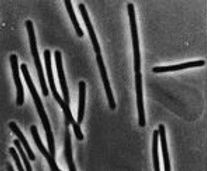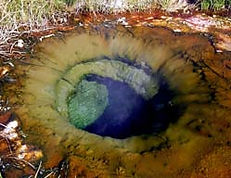top of page



Identification:
Thermus aquaticus
Thermophile
Special Physiology:
It secretes enzymes called extremozymes that enable retention of 3D structures in extremely hot environments.
Application:
Its enzyme Taq polymerase is used in polymerase chain reactions since it can withstand the repetitive heating involved in the process without denaturing. It can also give us an idea about origin of life on Earth since their living conditions resemble Earth 3 billion years ago.
Habitat information:
It is usually seen in hot springs such as that of Yellowstone National Park. It can be found in Iceland, Kamchatka, New Zealand, Italy, Mt. Lassen, and other places. It can survive at temperatures of 55-100 degrees Celcius in weakly acidic or basic waters. It is very sensitive to changes in salinity.
http://serc.carleton.edu/microbelife/extreme/extremeheat/index.html
https://microbewiki.kenyon.edu/index.php/Thermus_aquaticus*

Identification:
Sulfolobus acidocaldarius
Acidophile
Special Physiology:
It can oxidize sulfur for sulfuric acid production and therefore plays a major role in the existence of sulfur-oxidizing bacteria. It is capable of direct removal of DNA damage, base excision repair, nucleotide excision repair, and homolog-dependent double-strand-break repair, as well as, a fairly short mRNA half-life distribution so that it can regulate gene expression upon sudden environmental changes.
Application:
It is frequently used in studies regarding chromatin-binding proteins, replication, cell cycle, repair, transcription, translation, metabolism, and in vivo genetic studies.

Habitat information:
It is an aerobic thermoacidophilic crenarchaeon which grows optimally at 80°C and pH 2 in terrestrial solfataric springs. It can be found in Yellow Stone Park. It is usually found attached to the surface of sulfur cyrstals.
https://microbewiki.kenyon.edu/index.php/Sulfolobus_acidocaldarius https://upload.wikimedia.org/wikipedia/commons/thumb/f/f5/Grand_prismatic_spring.jpg/640px-Grand_prismatic_spring.jpg

Identification:
Dunaliella salina
Halophile
Special Physiology:
It was able to adapt to high salinity environments through accumulating glycerol to balance osmotic pressure. Its red pigmentation is thought to play a role in the red colouring of salted brines.
Application:
Its adaptation to high salinity and also high solar radiation allows its use in production of commercial products such as lipstick due to β-carotene production. It is typically used as a model organism for observing the effects of saline adaptation in algae.

Habitat information:
It is a hyper-halotolerant organism found in high densities in salted brines, salt evaporation ponds, and hypersaline lakes. It is able to tolerate varying NaCl concentrations, ranging from 0.2% to approximately 35%.
https://microbewiki.kenyon.edu/index.php/Dunaliella_salina
bottom of page